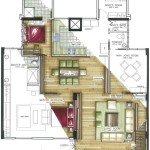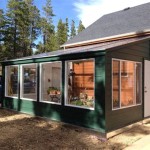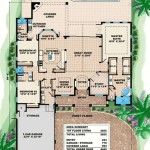Simple House Plans With Wrap Around Porch
Wrap-around porches evoke a sense of classic Americana, offering a welcoming space for relaxation and socialization. Integrating this feature into a simple house plan can enhance curb appeal and provide practical outdoor living space without significantly increasing complexity or cost. This article explores the benefits and considerations involved in choosing a simple house plan with a wrap-around porch.
One of the primary advantages of a wrap-around porch is the expanded outdoor living area it creates. This space can be furnished with comfortable seating, dining tables, and even swings, effectively extending the usable square footage of the home. The porch provides shade and protection from the elements, allowing residents to enjoy the outdoors in various weather conditions. This added space can be particularly valuable for smaller homes, offering a versatile area for entertaining guests or simply enjoying a quiet evening outdoors.
A wrap-around porch significantly enhances a home's aesthetic appeal. It adds a touch of traditional charm and creates a welcoming ambiance. The continuous porch also visually expands the footprint of the house, giving it a grander presence. Furthermore, the porch can be customized with various architectural details, such as columns, railings, and decorative trim, to complement the overall style of the house. These customizable elements allow homeowners to create a unique and personalized exterior that reflects their individual tastes.
From a functional perspective, a wrap-around porch offers several benefits. It provides shade, which can help reduce cooling costs during warmer months. The covered area also protects the exterior walls and doors from direct sunlight and rain, potentially extending the lifespan of these building materials. Additionally, a well-designed wrap-around porch can offer a degree of privacy, acting as a buffer between the interior of the home and the street or neighboring properties.
Several factors should be considered when selecting a simple house plan with a wrap-around porch. The orientation of the house on the lot is crucial for maximizing the benefits of the porch. Ideally, the porch should be positioned to take advantage of prevailing breezes and shade during the hottest parts of the day. Careful consideration should also be given to the size and layout of the porch to ensure it meets the homeowner's needs and lifestyle.
The climate of the region is another important factor. In areas with harsh winters, it may be necessary to incorporate features like screens or storm windows to make the porch usable year-round. In warmer climates, ceiling fans and proper ventilation can enhance comfort during the summer months. Understanding the local climate helps ensure the porch is a functional and enjoyable space throughout the year.
The architectural style of the house should also be considered when designing the wrap-around porch. The porch should complement the overall aesthetic of the home, whether it be a traditional farmhouse, a craftsman bungalow, or a modern ranch. The materials used for the porch, such as wood, composite decking, or concrete, should be chosen based on durability, maintenance requirements, and aesthetic preferences.
Budget is a critical consideration for any home building project. While a wrap-around porch can add value and functionality to a home, it also adds to the overall cost. Homeowners should carefully evaluate their budget and prioritize their needs to ensure the project remains within their financial means. Choosing cost-effective materials and simplifying the design can help manage expenses without sacrificing functionality or aesthetic appeal.
Accessibility is an important aspect to consider, particularly for individuals with mobility limitations. The porch should be designed with easy access in mind, incorporating features such as ramps or wide doorways. Proper lighting and handrails should also be included to ensure safety and usability for all occupants and guests. Addressing accessibility needs during the planning phase can prevent costly modifications later on.
Maintenance requirements should also be factored into the decision-making process. Different materials require varying levels of upkeep. Wood porches, for example, require regular painting or staining to protect them from the elements. Composite materials typically require less maintenance but may come at a higher initial cost. Understanding the long-term maintenance needs of different materials can help homeowners make informed decisions that align with their lifestyle and budget.
Finally, local building codes and regulations should be reviewed before finalizing any plans. These codes may dictate specific requirements for porch construction, such as height restrictions, railing specifications, and foundation requirements. Ensuring compliance with local regulations is essential for avoiding potential delays or costly revisions during the construction process.
:max_bytes(150000):strip_icc()/HOH_SL1254-d5dcd603b4e042e7852fbb2e93f2e0a5.jpg?strip=all)
13 House Plans With Wrap Around Porches
:max_bytes(150000):strip_icc()/RX_1909_SL1821-dd6f62380f214b4fb1e6ebd310c4d535.jpg?strip=all)
13 House Plans With Wrap Around Porches

House Plans With Wraparound Porches Porch Houseplans Com
One Story Wrap Around Porch House Plans Floor Plan Designs Houseplans Com
:max_bytes(150000):strip_icc()/fcp_1131-6d1ee16d664949f08815b69d4a5bdbe3.jpg?strip=all)
13 House Plans With Wrap Around Porches

Simple House Plans With Porches Wrap Around Porch Small Floor
:max_bytes(150000):strip_icc()/HOH_SL1482-df5abe9d7ee44f7a9f29e0a7b412b06c.jpg?strip=all)
13 House Plans With Wrap Around Porches

3 Bedroom Open Floor Plan With Wraparound Porch And Basement

Wrap Around Porch House Plans Designs For Builders
:max_bytes(150000):strip_icc()/sl-2007_4cp-front-6c82d021dec740b68fa01c91bd25d578.jpg?strip=all)
13 House Plans With Wrap Around Porches








